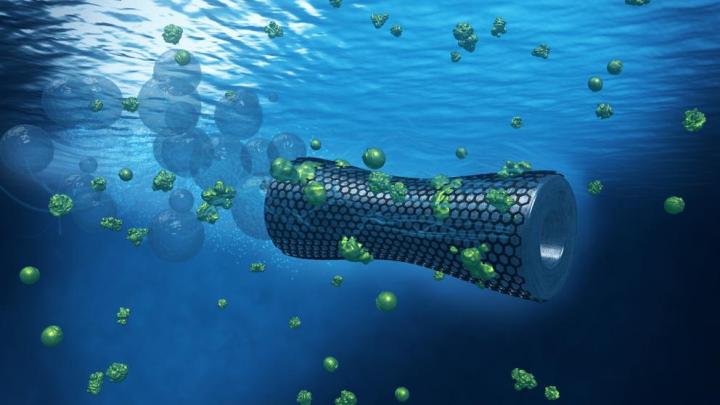
Imagine you’re a particle of lead, floating around the ocean, contaminating fish, and basically minding your own business. A dark cloud approaches amid a faint whirring sound. Within seconds hundreds of thousands of nanobots descend upon your neighborhood. Within an hour, 95 percent of your caustic friends have been captured, carried back to scientists, and packaged for recycling.
Now snap back to reality and realize that heavy metal pollution is a serious threat to our oceans. Industrial runoff and trashed electronics seep lead, mercury, and cadmium into the environment. Exposure to these pollutants inhibit marine life’s tissue reproduction and DNA repair, and can accumulate in the organism’s flesh. We in turn digest these contaminants when we fish our bounty from the sea and eat canned sardines. To keep our tuna free from toxins we’ve got to fix this mess.

That’s the goal of a project by scientists at the Max-Planck Institute for Intelligent Systems in Stuttgart, Germany; the Institute for Bioengineering of Catalonia in Barcelona; and the Catalan Institution for Research and Advanced Studies in Barcelona. The researches designed graphene oxide-based nanobots – smaller than a strand of hair – to target and collect heavy metal particles in wastewater, according to a paper published in the journal Nano Letters.
The three-layered nanobots are a triple threat. Their graphene oxide exterior absorbs lead. Their nickel middle allows researchers to control their movement via a magnetic field. A coating of platinum on the inside functions as an engine allowing the nanobots to propel themselves forward in a chemical reaction with hydrogen peroxide that shoots bubbles out their backends.
When the swarm of nanobots are finished sweeping through the wastewater (researchers say they can clear 95 percent of lead within an hour) a magnetic field calls them back and an acidic bath removes the absorbed lead ions. The mini lead can then be recycled. And the machines can also be put back to work. Though researchers have so far focused on absorbing lead, they hope to use similar three-layered designs, magnetic controls, and self-propulsion to collect other heavy metals.


